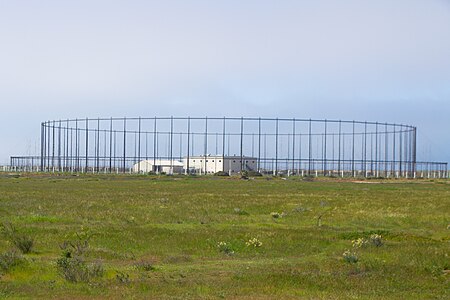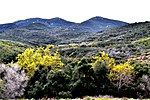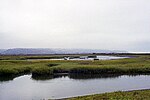Silver Strand Training Complex

Silver Strand Training Complex South (SSTC-S), formerly known as the Naval Radio Receiving Facility (NRRF), is the premier training facility for U.S. Special Operations Forces. Located between Imperial Beach and Silver Strand State Beach near San Diego in southern California, USA, this facility was known by locals as the "elephant cage" which is a nickname for the large Wullenweber direction finder antenna. The antenna was used to provide direction finding, primary communication links for U.S. Navy submarines. The antenna was finally dismantled in 2015, even though it was scheduled to be removed in fiscal year 2007. Presently the area is part of Naval Base Coronado and commanded by that base's Commanding Officer. While just north of Imperial Beach, it is within the city limits of Coronado.
Excerpt from the Wikipedia article Silver Strand Training Complex (License: CC BY-SA 3.0, Authors, Images).Silver Strand Training Complex
Hooper Boulevard,
Geographical coordinates (GPS) Address Nearby Places Show on map
Geographical coordinates (GPS)
| Latitude | Longitude |
|---|---|
| N 32.596389 ° | E -117.128056 ° |
Address
Hooper Boulevard
Hooper Boulevard
91932
California, United States
Open on Google Maps








